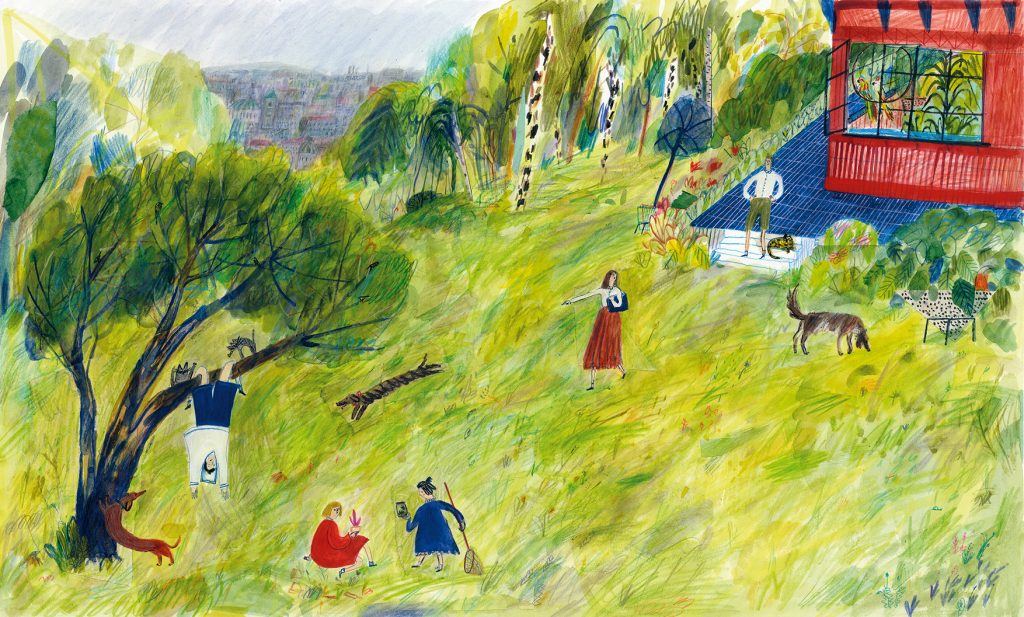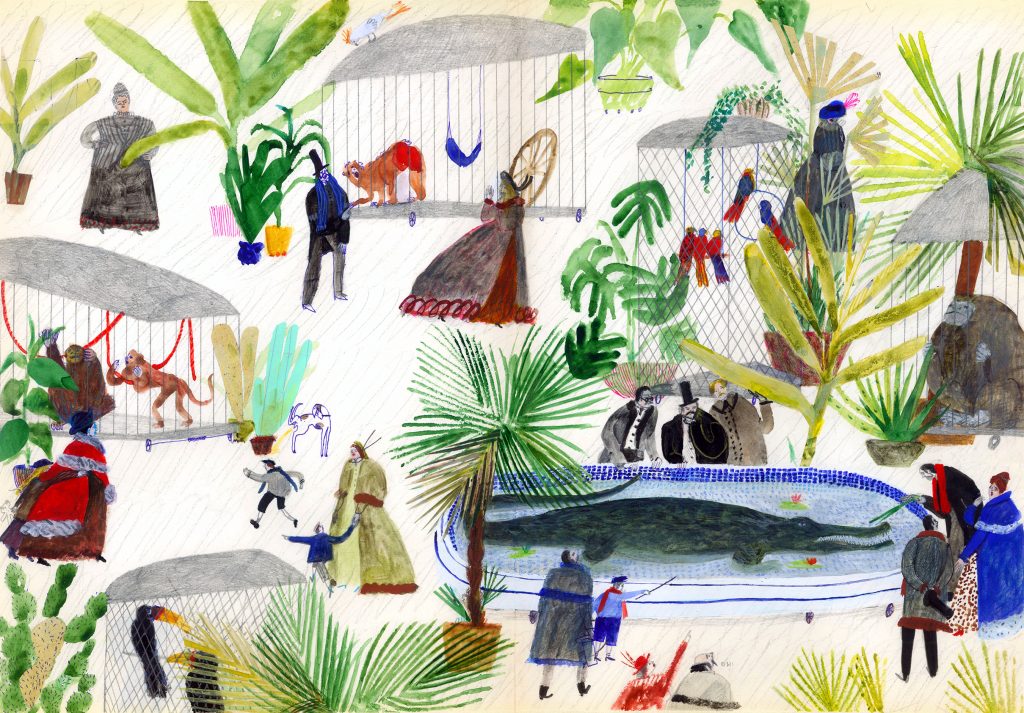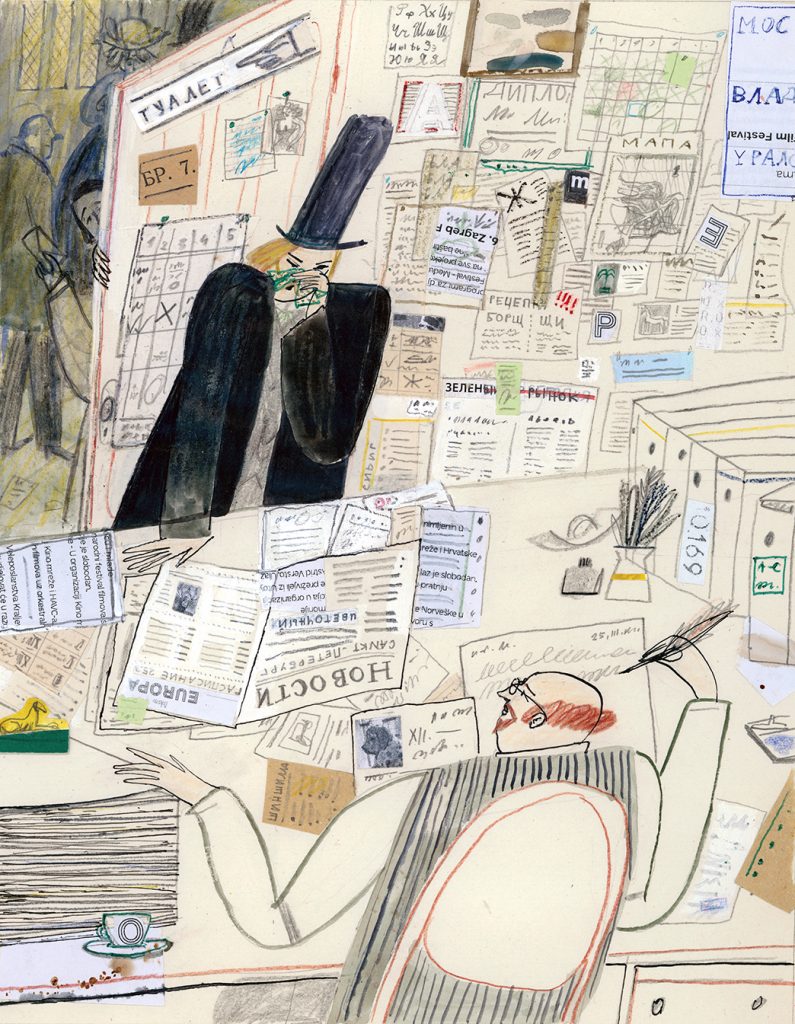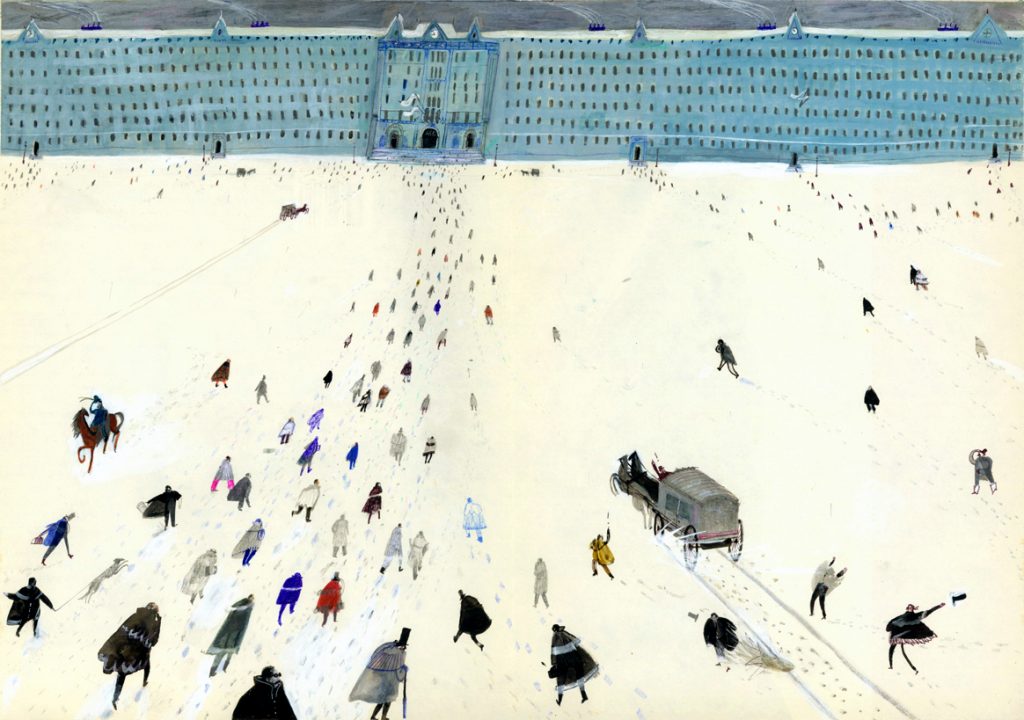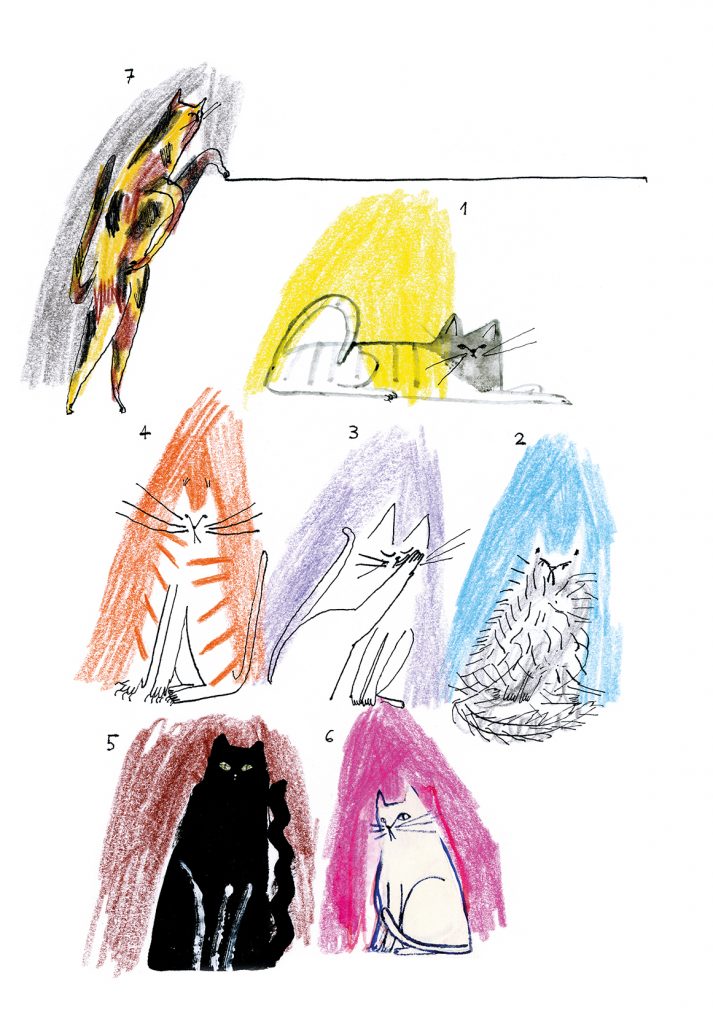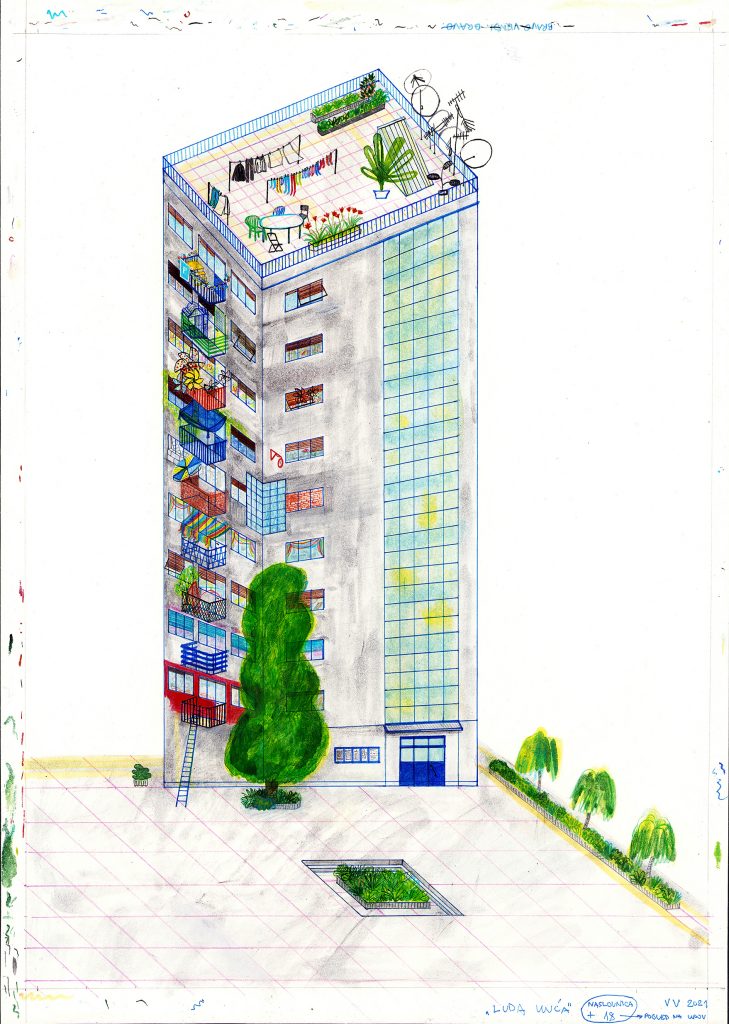Wer ist eigentlich Vendi Vernić? Und was mag/macht sie für Kinderbücher? Drei Fragen an die Illustratorin aus Kroatien.
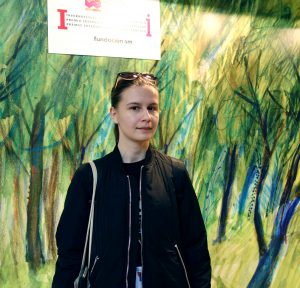
– How did you start to illustrate and write books for children (and young people)?
I got interested in illustrating books in high school, as I realized that is the medium that allows me to combine many of my creative interests. Later on, I enrolled at the Academy of Fine Arts and had a great education in a variety of artistic fields that shaped my approach to illustration.
However, it was the IX International Award for Illustration Bologna Children’s Book Fair – Fundación SM I won in 2018 that led to my first published picture book, and then the following years were quite busy with many projects.
Ich interessierte mich schon in der Schule für die Illustration von Büchern, weil ich merkte, dass ich mit diesem Medium viele meiner kreativen Interessen verbinden kann. Später habe ich mich an der Akademie der Schönen Künste eingeschrieben und eine großartige Ausbildung in verschiedenen künstlerischen Bereichen genossen, die meine Herangehensweise an die Illustration geprägt hat.
Aber erst der IX. Internationale Preis für Illustration der Kinderbuchmesse Bologna -Fundacion SM den ich 2018 gewonnen habe, führte zu meinem ersten veröffentlichten Bilderbuch, und die nachfolgenden Jahre war ich mit vielen Projekten beschäftigt.
– Which of your books should everybody be familiar with (and why)?
The first one I have to mention is “La casa de fieras” (Ediciones SM, 2019), my first published picture book. It is a Spanish translation of the short story “The Menagerie” by Ivana Brlić-Mažuranić, the most important Croatian writer for children and internationally recognized for “Croatian Tales of Long Ago”.
The second one would be “El Abrigo / La Nariz” (Saposcat, 2019), another Spanish translation of stories “The Overcoat / The Nose” by N. V. Gogol. It started as my personal project, and those were my first illustrations selected for the Illustrators Exhibition in Bologna.
“Seven Cats” (Mala zvona, 2019) is a collection of short stories and poetry for children by D. Harms. I loved working on a variety of texts and themes that all share a distinctive humor.
And for the last, “Crazy House” (Mala zvona, 2021) by Sanja Lovrenčić is a story of diversity and tolerance between wacky inhabitants of a building. I incorporated many elements from local architecture and some details from the period of my childhood in those illustrations, and I think they ended up being quite authentic.
Das erste Buch, das ich erwähnen muss, ist „La casa de fieras“ (Ediciones SM, 2019), mein erstes veröffentlichtes Bilderbuch. Es ist eine spanische Übersetzung der Kurzgeschichte „Die Menagerie“ von Ivana Brlić-Mažuranić, der bedeutendsten kroatischen Kinderbuchautorin die international bekannt ist für ihre „Kroatische Märchen aus längst vergangenen Zeiten“.
Das zweite Buch wäre „El Abrigo / La Nariz“ (Saposcat, 2019), eine weitere spanische Übersetzung der Erzählungen „Der Mantel / Die Nase“ von N. V. Gogol. Es begann als mein persönliches Projekt, und dies waren meine ersten Illustrationen, die für die Illustratorenausstellung in Bologna ausgewählt wurden.
„Sieben Katzen“ (Mala zvona, 2019) ist eine Sammlung von Kurzgeschichten und Gedichten für Kinder von D. Charms. Ich habe es geliebt, an der Vielzahl von Texten und Themen zu arbeiten, die alle einen unverwechselbaren Humor haben.
Das letzte Buch, „Das verrückte Haus“ (Mala zvona, 2021) von Sanja Lovrenčić, ist eine Geschichte über Vielfalt und Toleranz zwischen den verrückten Bewohnern eines Hauses. Ich habe viele Elemente der lokalen Architektur und einige Details aus meiner Kindheit in diese Illustrationen einfließen lassen, und ich denke, dass sie am Ende ziemlich authentisch sind.
– Which theme or motif would you love to work on in a children’s book someday?
I’d love to implement some themes from astronomy and physics into a children’s book, and also from science fiction. I’m interested in public spaces, architecture, interactions and stories they can create. Many complex emotions and life situations may impact both kids and adults, it would be a challenge to explore them in an illustrated book. In the end, I think the main difference between children’s and adult literature is in the interpretation of themes, in the way they they explore and present their stories.
Ich würde gerne einige Themen aus der Astronomie und Physik in einem Kinderbuch umsetzen, aber auch aus der Science Fiction. Ich interessiere mich für öffentliche Räume, Architektur, Interaktionen und Geschichten, die dadurch entstehen können. Viele komplexe Emotionen und Lebenssituationen können sowohl Kinder als auch Erwachsene betreffen, es wäre eine Herausforderung, sie in einem illustrierten Buch zu erforschen. Letztendlich denke ich, dass der Hauptunterschied zwischen Kinder- und Erwachsenenliteratur in der Interpretation der Themen liegt, in der Art und Weise, wie sie ihre Geschichten erforschen und präsentieren.
